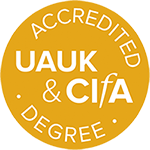How did our ancestors walk? Perhaps the greatest challenge that this question has posed in the past, is the lack of methodological applications in which no study has previously reconstructed how our ancestors moved using biomechanical modelling techniques. We need to consider not just individual bones when reconstructing movement, but to look at the full body to begin to tell the story of our ancestors’ movement. Muscles animate our body, permitting us to walk, run and even dance. We must reconstruct the muscles of the body to understand ancestral locomotion. This project intends to address how early humans moved via the construction of 3D musculoskeletal models. I will build models of five early human ancestors using the available fossil data of the legs in which the missing bony gaps will be filled in, and I will construct the muscles of their legs for the first time. By modelling bones and muscles together, I will be able to compute several predictive biomechanical simulations in which I will be able to assess the efficiency of ancestral locomotion. By doing so, I will be able to determine which early humans were bipedal, and this may even link bipedalism to the environment.
Leverhulme Trust
Isaac Newton Trust


